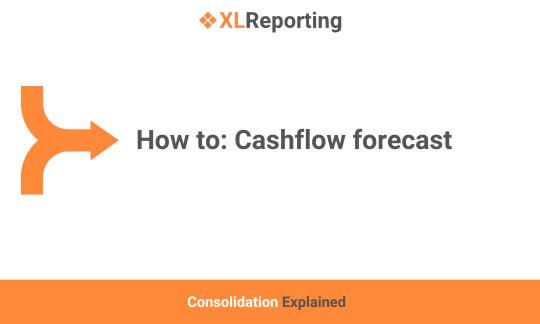How to Cashflow Forecast: A practical guide for FP&A and Accounting Teams

 Edgar de Wit
Edgar de Wit
Even the most profitable companies can run into trouble if their cash inflows and
outflows aren’t properly aligned. That’s why cashflow forecasting is a critical tool
for
finance, FP&A, and accounting teams. It goes beyond profit and loss reporting,
helping
you manage liquidity, prepare for uncertainty, and plan with confidence.
What is cashflow forecasting?
Cashflow forecasting is the process of projecting your company’s future cash
position. It
answers questions like:
- Do we have enough cash to cover expenses next quarter?
- When is the best time to invest in growth or new hires?
- What happens to our liquidity if sales drop or payments are delayed?
Unlike budgeting and planning, which focus on revenues and expenses, cashflow
forecasting
focuses on timing — when money actually moves in and out of your accounts.
Why does cashflow forecasting matter?
- Liquidity management: Avoid surprises and keep operations
running
smoothly.
- Strategic decision-making: Plan investments, hiring, or
financing
with confidence.
- Scenario planning: See the impact of best-case, worst-case, and
most-likely situations.
- Risk reduction: Spot cash shortfalls before they become a
crisis.
How to create a cashflow forecast
- Define your time horizon: Choose whether you want a short-term
(weekly/monthly) or long-term (quarterly/annual) forecast.
- Gather reliable data: Pull data directly from your accounting
software to ensure accuracy.
- Map inflows and outflows: Include revenue, loan proceeds,
customer
payments, operating expenses, payroll, taxes, and investments.
- Factor in timing: Adjust for when money is actually received or
paid—not just when it’s invoiced.
- Run scenarios: Test how different assumptions (delayed
payments,
higher costs, faster growth) affect your liquidity.
- Review regularly: A forecast is only useful if it’s updated
with
real data and evolving business conditions.
Real-world example
A SaaS company models its subscription renewals. If 10% fewer renewals occur than
planned, the forecast shows a cash dip within three months. With this insight,
management decides to delay hiring until renewal rates stabilize.
Conclusion
Cashflow forecasting is about enabling growth. When you understand your future
liquidity,
you can make bold moves with confidence.
With XLReporting, you can connect directly to your accounting system, build rolling
cashflow forecasts, and run instant what-if scenarios.
Stop guessing. Start planning.
Back to the list 
 Edgar de Wit
Edgar de Wit